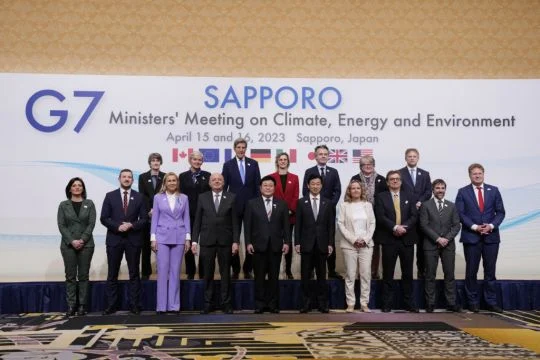G7 environment ministers have committed to accelerating the production and deployment of battery storage technology.
In a significant move towards combating climate change and bolstering renewable energy efforts, G7 environment ministers have committed to accelerating the production and deployment of battery storage technology. This commitment was made during their meeting on Tuesday, underscoring the critical role batteries play in the energy transition.
Addressing Growing Demand
Batteries have become indispensable not only in the realm of electric vehicles (EVs) but also in wind and solar power sectors due to the intermittent nature of these energy sources. Storing surplus electricity in batteries is essential for stabilizing distribution, particularly during peak demand periods or when there are lulls in supply such as at night or during low winds.
According to a recent report by the International Energy Agency (IEA), battery deployment in the energy sector surged by over 130 percent last year compared to 2022, with China, the European Union, and the United States emerging as the primary markets. Moreover, countries like Britain, South Korea, Japan, and various nations in Africa are increasingly embracing solar and storage technology to enhance energy access.
Six-Fold Goal for Renewable Energy
To meet the ambitious target of tripling global renewable energy capacity by 2030, as set at the UN climate conference, the IEA emphasizes the need for a six-fold increase in battery storage capacity. Achieving this goal is crucial for reducing emissions from fossil fuel consumption and aligning with the international objective of limiting global warming to 1.5 degrees Celsius above pre-industrial levels.
The IEA estimates that to meet this target, an overall storage capacity of 1,500 gigawatts by 2030 is required, with batteries accounting for 1,200 gigawatts of this capacity.
Overcoming Cost Challenges
While the cost of batteries has plummeted by 90 percent in less than 15 years, further cost reductions are necessary to accelerate the energy transition. Fatih Birol, the chief of IEA, highlighted that the combination of solar PV and batteries is already competitive with new coal plants in India and is poised to surpass the cost of new coal in China and gas-fired power in the United States in the near future.
However, Birol cautioned that the pace of progress must expedite to meet climate change and energy security objectives. Diversifying supply chains and reducing costs are imperative, especially as most batteries are currently produced in China.
Metal Supply and Technological Innovations
Availability of critical metals such as lithium and cobalt, essential for battery manufacturing, poses a challenge. However, experts suggest that developing chemical alternatives and transitioning to technologies like sodium-ion batteries could mitigate reliance on scarce resources.
Looking beyond 2030, advancements in high-density solid-state batteries are anticipated to offer longer lifespans and enhanced performance. Additionally, alternatives to batteries such as pumped storage hydropower and the conversion of electricity into hydrogen are gaining traction.
Promoting Flexibility in Energy Systems
While storage solutions like batteries are crucial, enhancing the flexibility of energy production and distribution systems is equally important. Governments and industries are gearing up for this transition, with the European Union urging member states to assess their flexibility potential to accommodate the doubling of renewables by 2030.
In line with these efforts, the G7 has pledged to not only support increased production and utilization of battery storage but also to promote technological advancements and strengthen grid infrastructure.
In summary, the commitment of G7 environment ministers to ramp up battery storage technology signifies a concerted effort to accelerate the transition towards renewable energy and combat climate change on a global scale. However, realizing these goals will require sustained collaboration, innovation, and investment from both public and private sectors.
